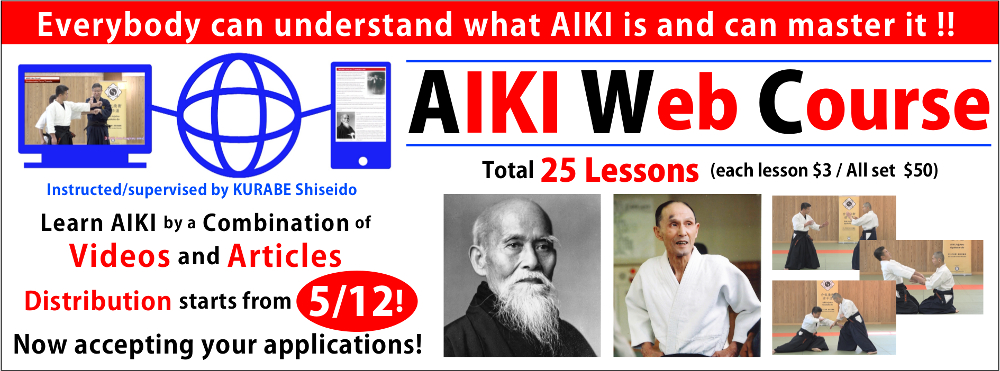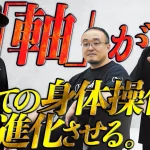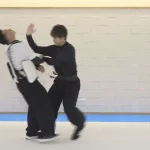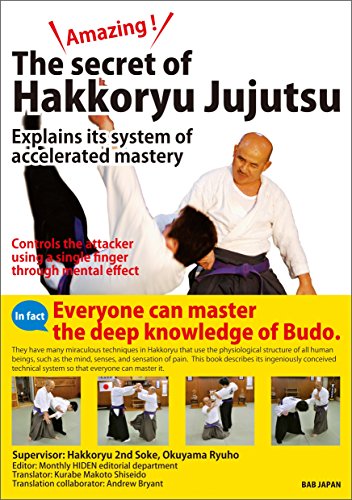 This book discloses the secrets of Hakkoryu Ju- jutsu, which influenced the development of many other Budo Ryuha
This book discloses the secrets of Hakkoryu Ju- jutsu, which influenced the development of many other Budo Ryuha
Hakkoryu techniques do not depend on muscular power. By using its sophisticated techniques, one can control another instanta- neously, even without clearly visible movement. Although the name Hakkoryu is very famous among many martial artists, its secrets have never been disclosed to the public until now.
At long last, a book has finally been published that reveals its secrets. Many martial artists all over the world have been waiting years for this book.
They have many miraculous techniques in Hakkoryu that use the physiological structure of all human beings, such as the mind, senses, and sensation of pain. This book describes its ingeniously conceived technical system so that everyone can master it.
You can buy this book on Amazon.com!
We introduce begining of this book in 3 parts!
Amazing ! The Secret of HAKKORYU JUJUTSU
Explains its system of accelerated mastery
Supervisor: Hakkoryu 2nd Soke, Okuyama Ryuho
Editor: Monthly HIDEN editorial department
Translator: Kurabe Makoto Shiseido
Translation collaborator: Andrew Bryant
Chapter 2
Imagine yourself as a great Buddha statue
◎Never try to forcefully lower your grip if you actually want to lower it.
In Chapter 1, we focused on the raising arm motion and in this chapter we focus on lowering the arm as an opposite motion. Please remember it is important not to use force for the raising arm motion. In other words, it is important to avoid partial muscle operation which tends to occur unconsciously. This is the biggest basic concept that is commonly applied to all the movements in Hakkoryu.
Everybody reading this might suppose that it should be quite difficult to realize this concept. But Okuyama 2nd Soke says “Normally, it could be the easiest way because you just simply can do it quite naturally.”
It is still very difficult for me to realize this basic concept, which means I probably do not do it naturally according to Okuyama 2nd Soke’s explanation. Regardless, this lowering arm motion seems easier than the raising arm motion, in my opinion.
“Of course everybody understands that it does not require force just to lower their free arm. But when you execute an actual technique with this motion it is not so easy anymore.”
Okuyama 2nd Soke showed me a part of Uchi Komi Dori as an example which is shown in the photos on [photos 2-1], no.1 shows the phase that Okuyama 2nd Soke blocks the opponent’s strike with his right hand and holds his right fist with his right hand and wrist by his left hand. Then he starts lowering his two hands to make Kuzushi (unbalancing) to the opponent.
This sequence is similar to both Nikajo Kime in Daitoryu and Nikyo in Aikido. Also there is a similar technique in Kinki Jutsu which originated in China. They also show this technique very often with photos and those photos give an impression that the attacker receives a sharp pain in his grasped wrist by the defender’s vertical bending motion using both hands. And due to that pain the attacker is forced to fall on his knees. Based on that idea most of people try to bend the attacker’s wrist vertically using both hands to force the attacker on his knees.
In such a motion you can use only your wrists which cannot produce enough force. Then you try to use force in your arms to make the attacker kneel. In such a case you can leverage using only the triceps muscle in your upper arms (muscle attached to backside of your upper arm). The force produced in both cases is still insufficient to succeed.
It is the wrong way if you try to control the opponent’s wrist or to force him down intentionally, because these actions unconsciously cause local muscle operation which was described at the beginning of this chapter.
“It is not by force that you should perform this action. It is no use to try to leverage force created by wrists or by arms. You should transfer your entire body weight onto the grasping point, i.e. the attacker’s grasped wrist. You make your entire body weight as one block of mass. Then you can finally unbalance the attacker.”
But it is still quite difficult to perform it properly. If you are told as above, you surely have the idea that you should put your body weight onto the opponent’s wrist from above, or you should try to “hang” your bodyweight on his wrist. Such acts mean just putting static mass on the opponent and no more. It creates no movement, nor motion. In Bujutsu, it has a different meaning to say “put your whole body weight”. This instruction has a completely different action.
“If I instruct someone to integrate their body, then in most cases he makes a part of his body stiff. But in reality it can be possible to integrate one’s body only by relaxing the whole body. In Hakkoryu, we instruct students to imagine themselves as a huge Buddha statue.”
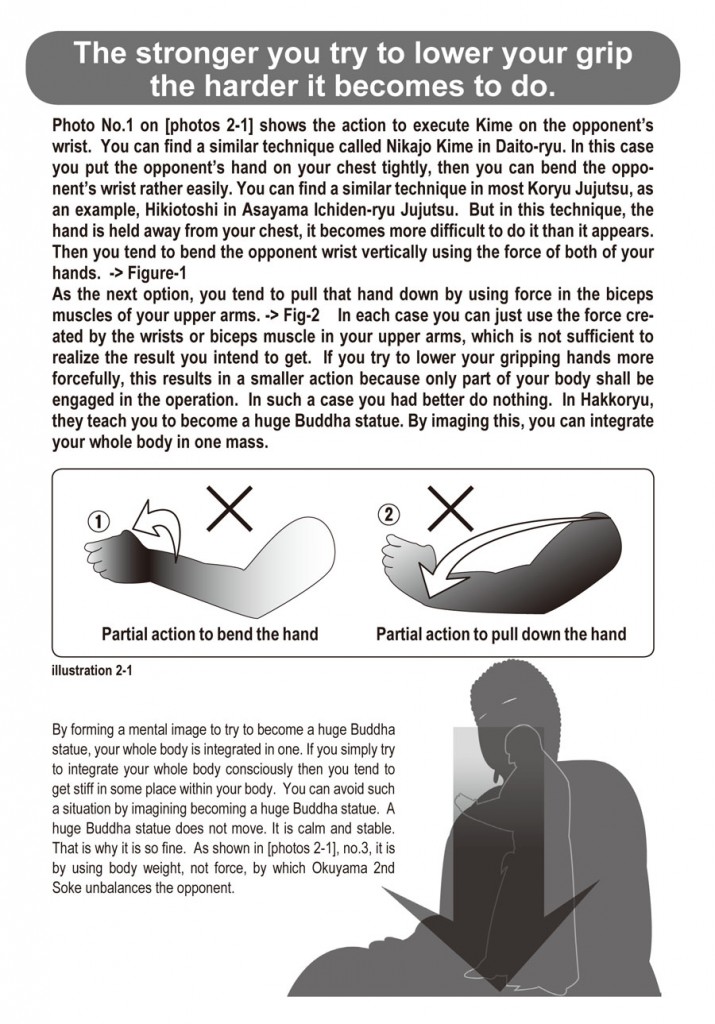
Just imagine a huge Buddha statue. It has great mass, but there is no force concentrated in any single part of its structure. Its whole structure consists of uniform material. There is no unevenness, nor deviation. If you imagine that you became a huge Buddha statue, there appears to be no force concentrating in your body. It must be an excellent idea to make such an image to become a huge Buddha statue.
“You will fail if you try to lower your grip only using force in arms. But by making such an image in your mind that your entire weight will be transferred into the opponent’s body through the point of contact, i.e. your grip and the opponent’s wrist, such weight transfer can be done successfully as a result of the mental effect, not by the application of physical force.”
During this weight transfer, Okuyama 2nd Soke explains, “Now my weight reaches the opponent’s wrist.” “Now it goes to his elbow.” “Now it reaches his shoulder, then it goes into his body.” He describes the process of how his body weight penetrates into the opponent’s entire body. In fact the opponent feels less freedom to move the deeper Okuyama 2nd Soke’s body weight penetrates through his body. In the end, he became totally unbalanced and fell down on the floor.
“I can control my weight transfer by centimeters. That is the clear difference between body weight transfer and force application. With force, even if it is immense, you can only apply it just to bend the opponent’s wrist. Even if the force applied is stronger, you can bend the opponent’s wrist stronger and nothing more. Hakkoryu’s techniques are not leveraging of such simple physical force applications.
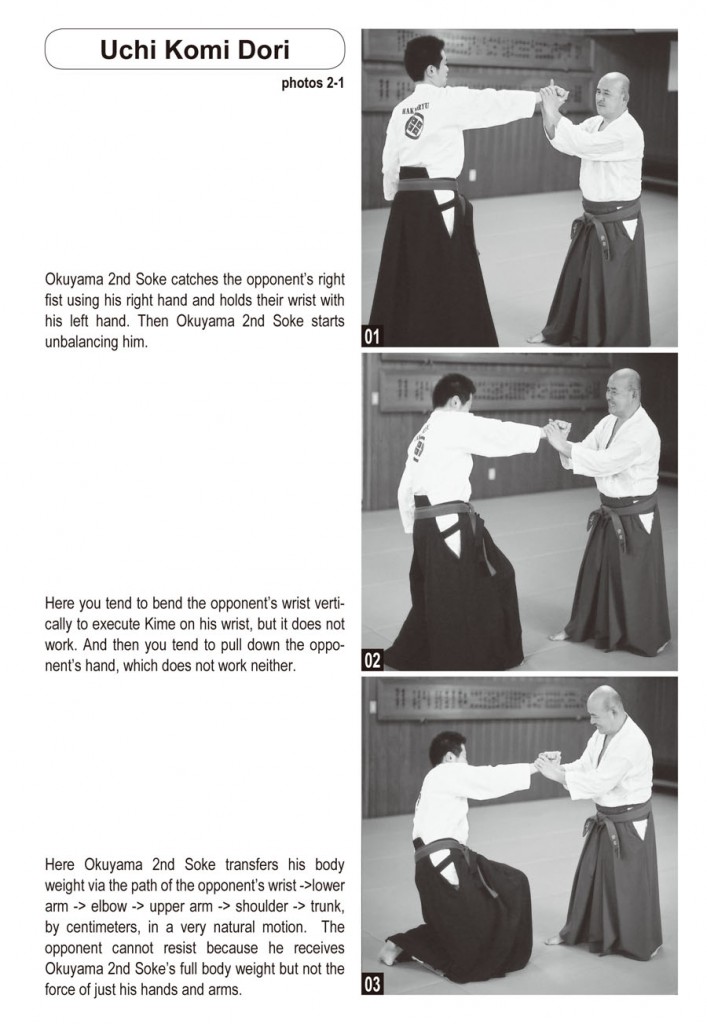
◎Pain increases pain
According to the uncertainty principle of quantum mechanics theory, if you put light on an extremely tiny substance such as the size of an atom in order to observe it, it changes its characteristics as a result of being illuminated. If you want to continue to observe it, it will change characteristics even more and accordingly, you can never observe that substance as it is in that very instance. I now feel similar weariness that if I lower my arm stronger, the action becomes more difficult.
“It is important where you put your consciousness. Let me try this……..” with that, Okuyama 2nd Soke put his sharp bent middle finger joint to his student’s chest, around the sternum, against a weak point called the Danchu, and pushed it. (refer to [photos 2-2], the first part). Of course, the opponent distorted his face as the result of sharp penetrating pain. That is the place between the left and right pectoral muscles which is covered by thin skin and directly connected to the bone, one of the weak points. He could not bear such pain.
Then changing offence and defense, the opponent pushed Okuyama 2nd Soke at the same place in exactly same way as Okuyama 2nd Soke did. But Okuyama 2nd Soke seemed to receive no pain. On the contrary, he pushed the opponent back, even as he continued to apply pressure against his chest. (refer to [photos 2-2], the latter part)
“You should focus your consciousness here (the place the opponent puts his sharp finger joint). But you still should not apply unnecessary force here. Then you will not feel pain, but the opponent starts feeling he is being pushed back. You have to do this while concentrating your conscious thought so strongly that the weak point will disappear.”
It is very difficult. You should concentrate your consciousness but never create tension at the point.
“Tension is created when you are fearful or you react sharply against even a small amount of pain. And it causes the weak point to be even more sensitive.”
When you feel pain, the body reacts to it unconsciously, i.e. automatically. Against this natural reaction of the human body, you should train yourself so that you can keep this tension-free condition. This is a very important concept in Hakkoryu.
As you try to do some action with a stronger intention, you might fall into a situation where you find it much more difficult. The theme of this chapter seems to become a frustrating paradox. Then a question came to me. “If this is the case, could I do it better if I try with weaker intention? Of course it cannot be so. The answer is clear.
If you have become too hot to do something, you cannot always achieve the expected good result. Because in such a situation you might miss your goal and keep going forward without knowing where the goal is.
Such things might often happen for human beings that a person becomes too serious, becomes combative, or feels a sense of fear by anticipating their failure. All those acts happen quite naturally for human beings. But even in such situations, if you can calm yourself and observe what is happening around you with a stable mind, the situation is seen quite differently.
I guess Hakkoryu is a Bujutsu system which guides you to such ideal situations.
Anyway, I begin to think over again that a mind and consciousness, which is the theme of this book, are quite difficult themes to be understood correctly and properly. I remember what Okuyama 2nd Soke said. “Concentrate your mind, but never concentrate on physical force”
What do the readers think about this theme?
As far as I’m concerned, in most of the cases I become anxious when I attempt to concentrate my conscious thought, or intent. Does it mean I concentrate my consciousness in the wrong way?
I asked Okuyama 2nd Soke what he means by “concentration” and how and what I should concentrate on.
“Well it is too difficult to explain that concept clearly at this stage. So I will explain it in plain words, step by step.”
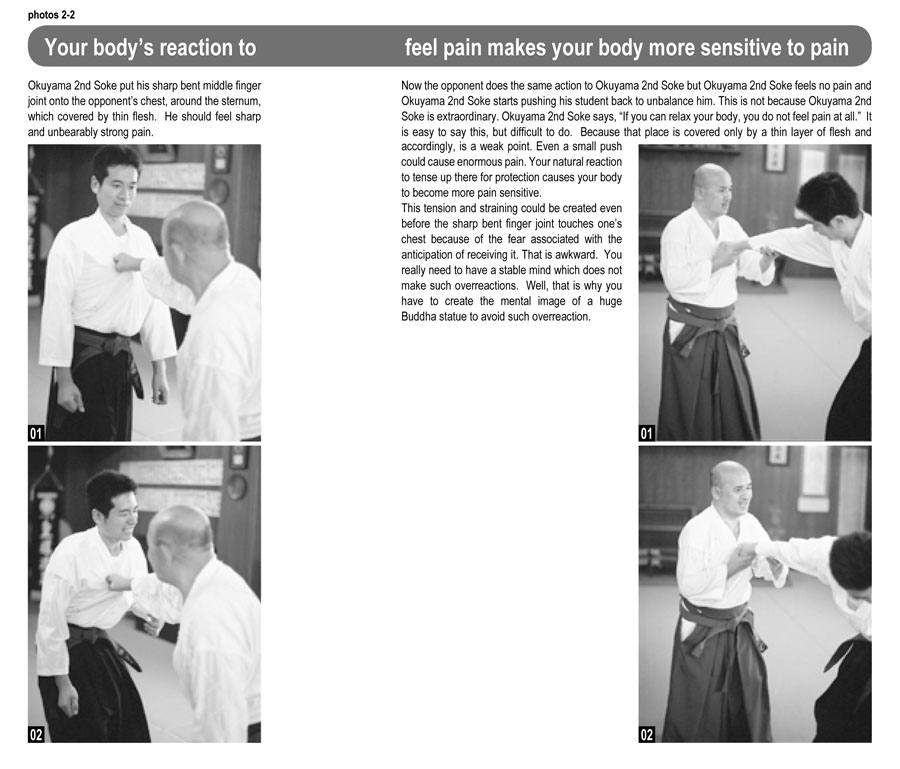
At the starting of AIKI Web Course
Cooperating with BAB Japan Co., Ltd., hereby I start AIKI Web Course in order to realize my long-standing desire to let as many as martial arts fans all over the world have the correct knowledge of AIKI and learn how to practice AIKI.
This course consists of
Part 1 as introductory articles, I explain a wide range of knowledge about what AIKI is, which contains 6 lessons.
Part 2 as main articles, for beginners/intermediate level, I explain how to practice AIKI to master. It contains 24 lessons.
The each lessons will be uploaded on BudoJapan website one by one every week.
I hope as many people as possible will be interested in AIKI and become able to practice it by following this course.
AIKI Web Course 25 Lessons
-
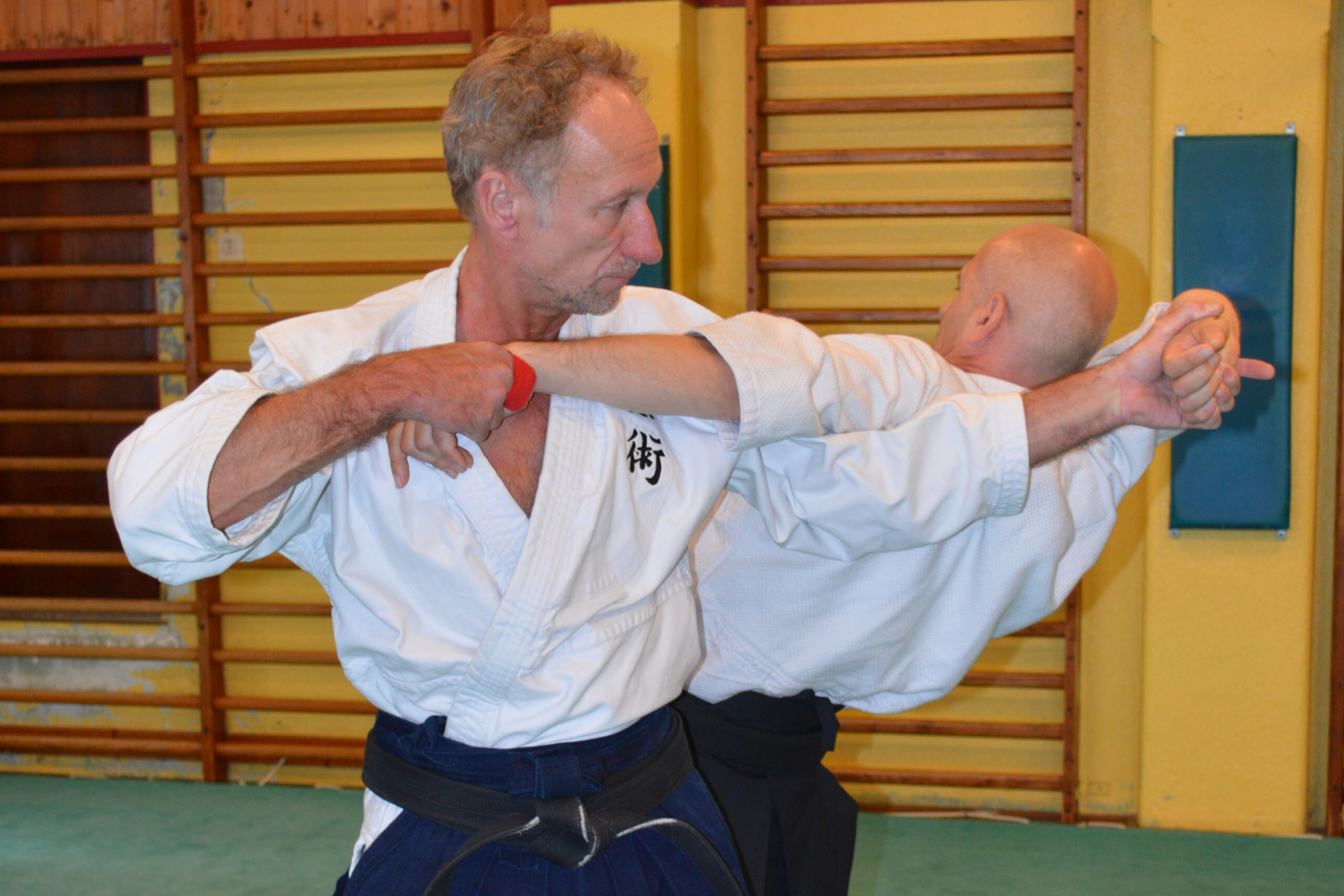
【AIKI JUJUTSU GYAKUTE-DO Series No.5】How you can learn Jujutsu properly
-
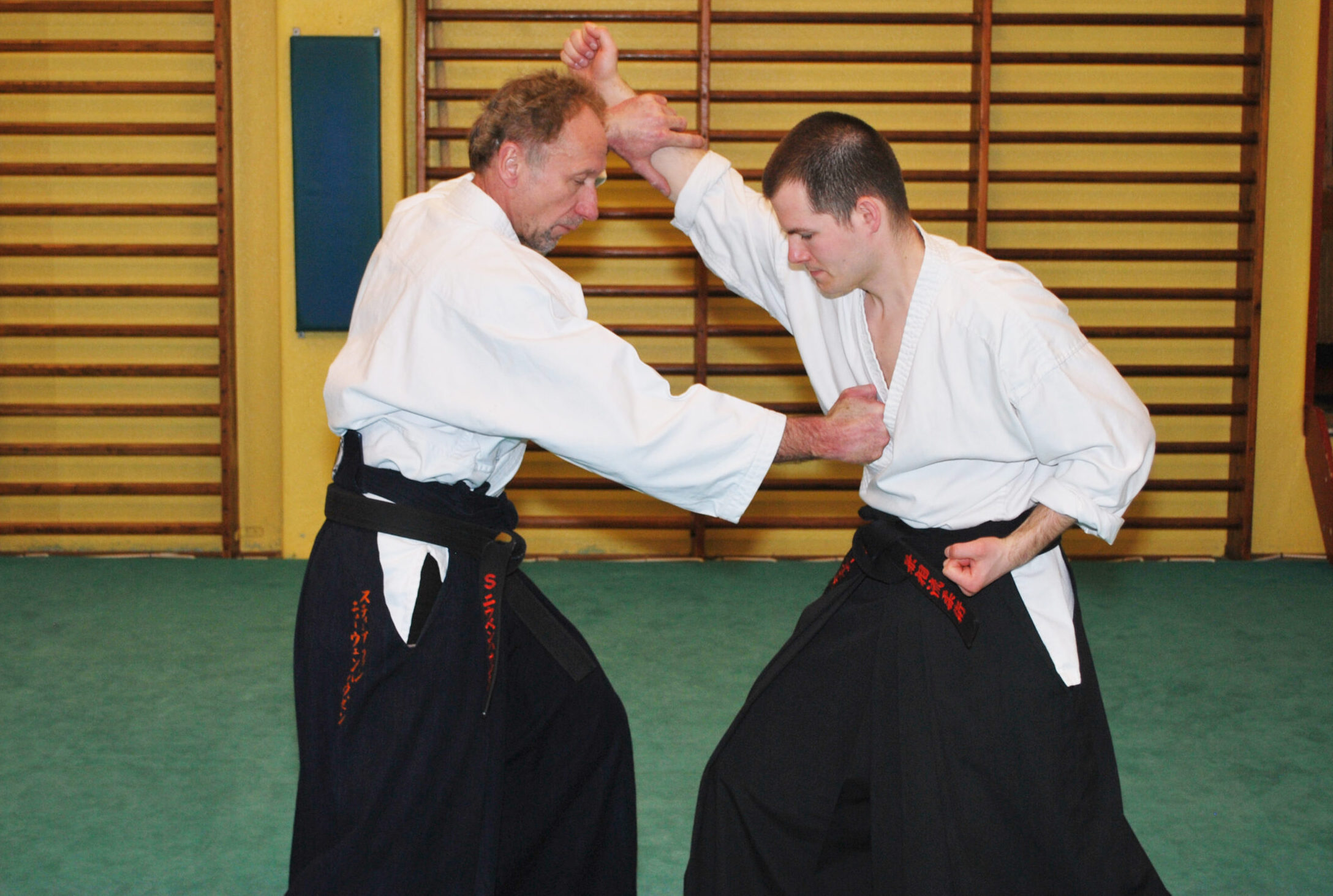
【AIKI JUJUTSU GYAKUTE-DO Series No.4】DAKEN-HO Hit and Kick KATA and AIKI
-
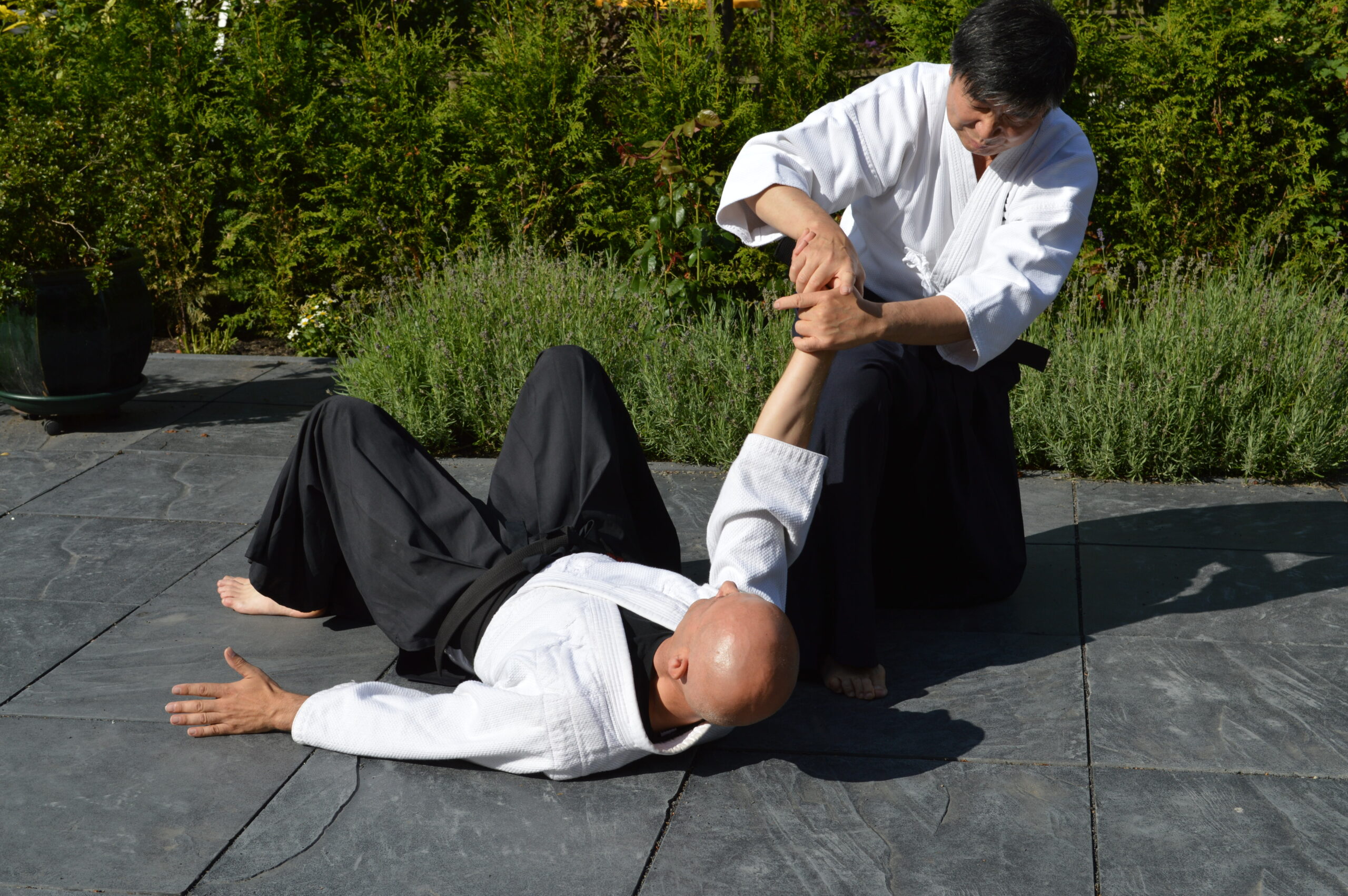
【AIKI JUJUTSU GYAKUTE-DO Series No.3】JUJUTSU WAZA, digest of FUDO
-
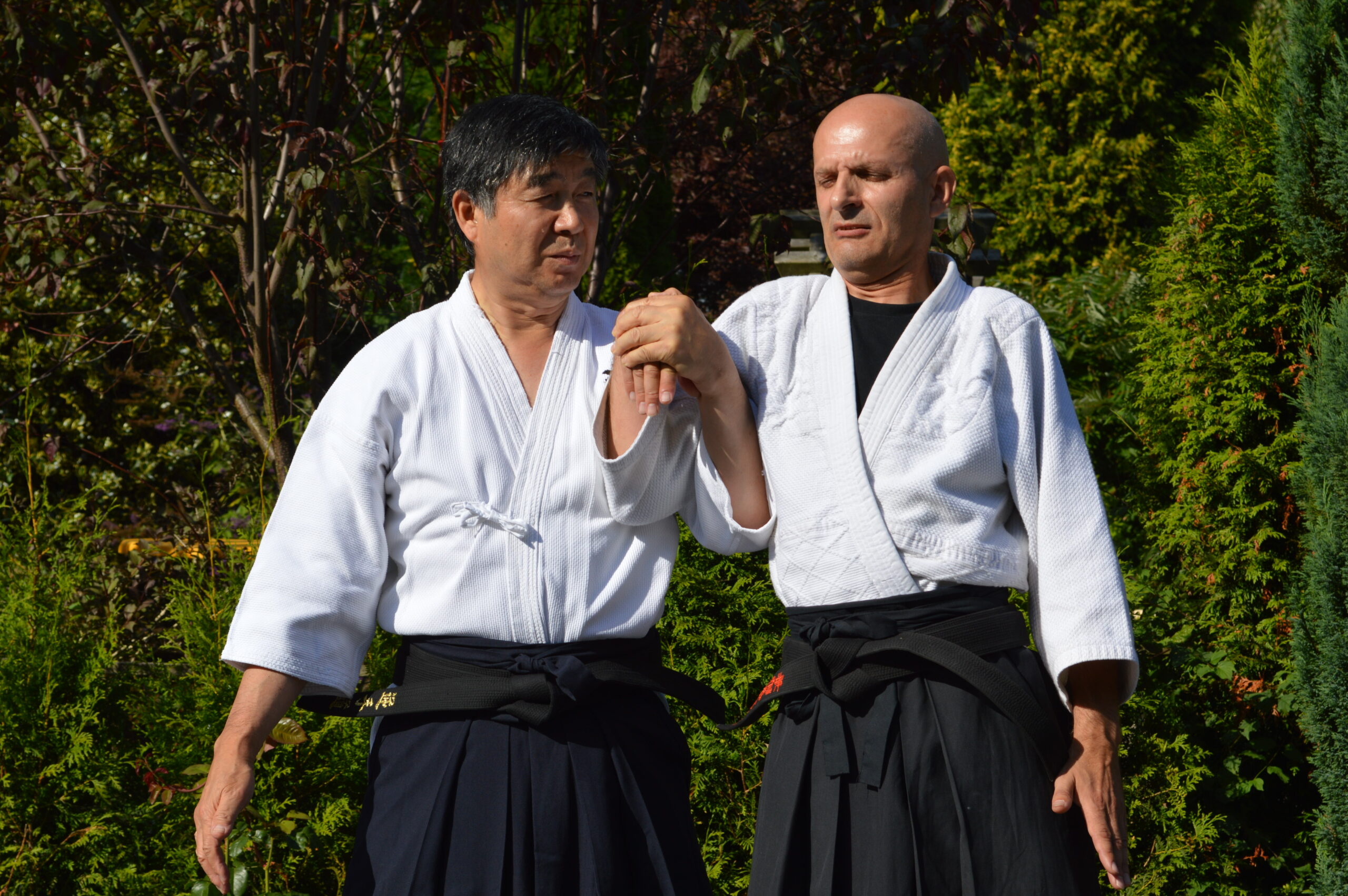
【AIKI JUJUTSU GYAKUTE-DO Series No.2】JUJUTSU WAZA, digest of NUKI, RENKO and NAGE
-

【AIKI JUJUTSU GYAKUTE-DO Series No.1】About GYAKUTE-DO and the digest of its basic techniques
-
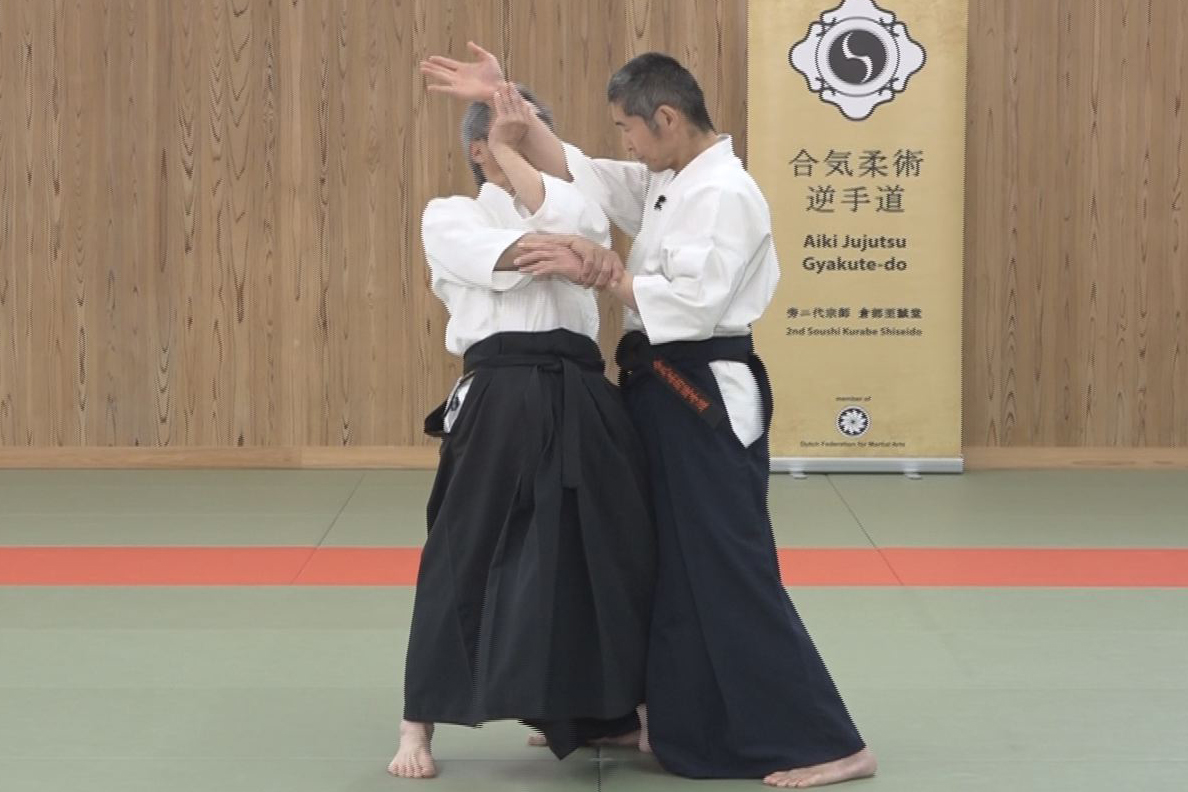
【AIKI Web Course Part 2】Lesson 24 With Comb. of Different Methods #2
-
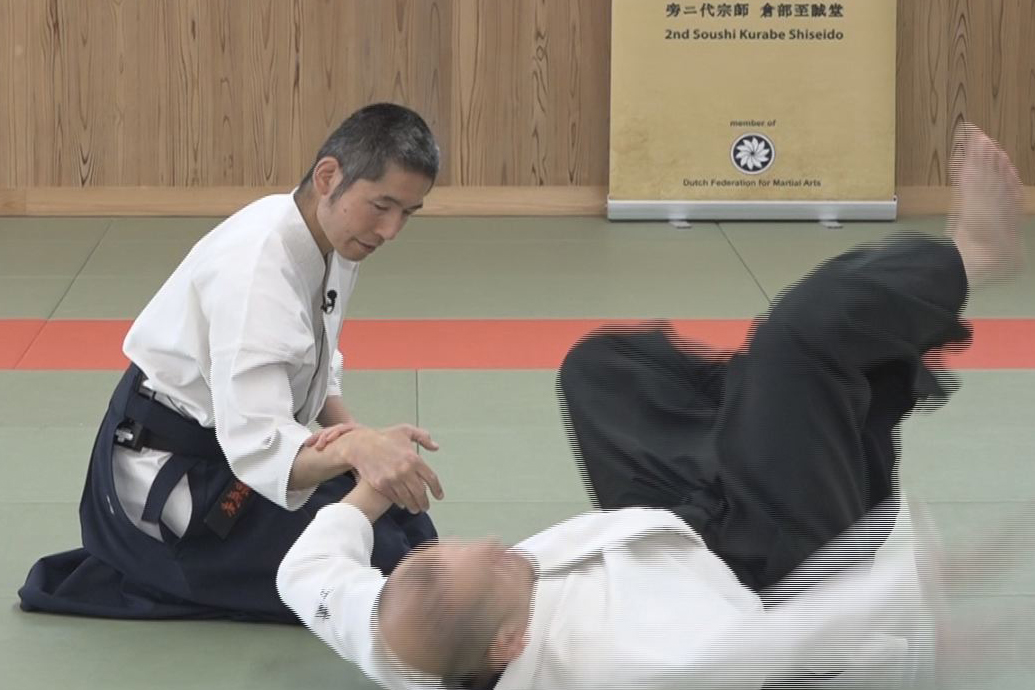
【AIKI Web Course Part 2】Lesson 23 With Comb. of Different Methods #1
-

【AIKI Web Course Part 2】Lesson 22 Advanced Tech. using F. E. method #2
-

【AIKI Web Course Part 2】Lesson 21 Advanced Tech. using F. E. method #1
-

【AIKI Web Course Part 2】Lesson 20 Advanced tech. using T. F. T. #2
-
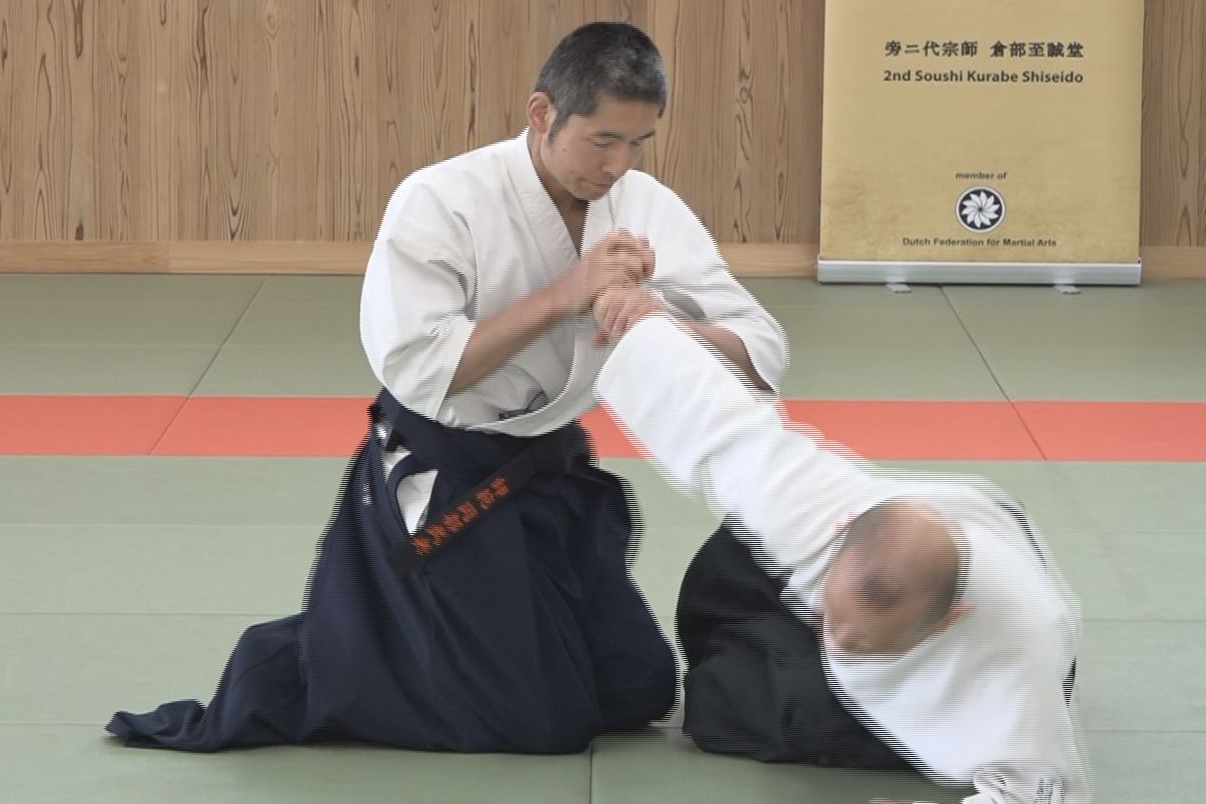
【AIKI Web Course Part 2】Lesson 19 Advanced tech. using T. F. T. #1
-
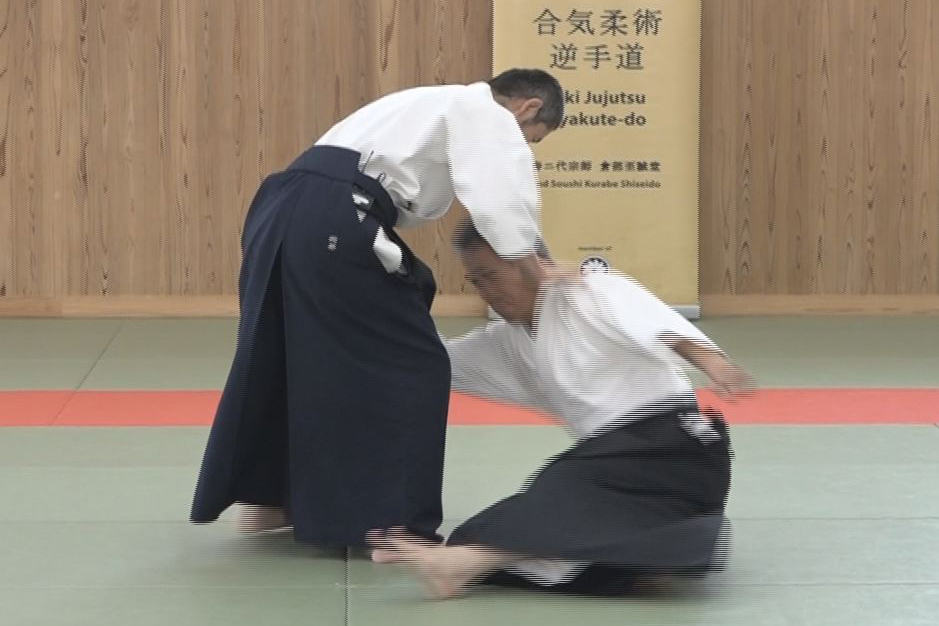
【AIKI Web Course Part 2】Lesson 18 Advanced tech. using AIKI Contact #2
-
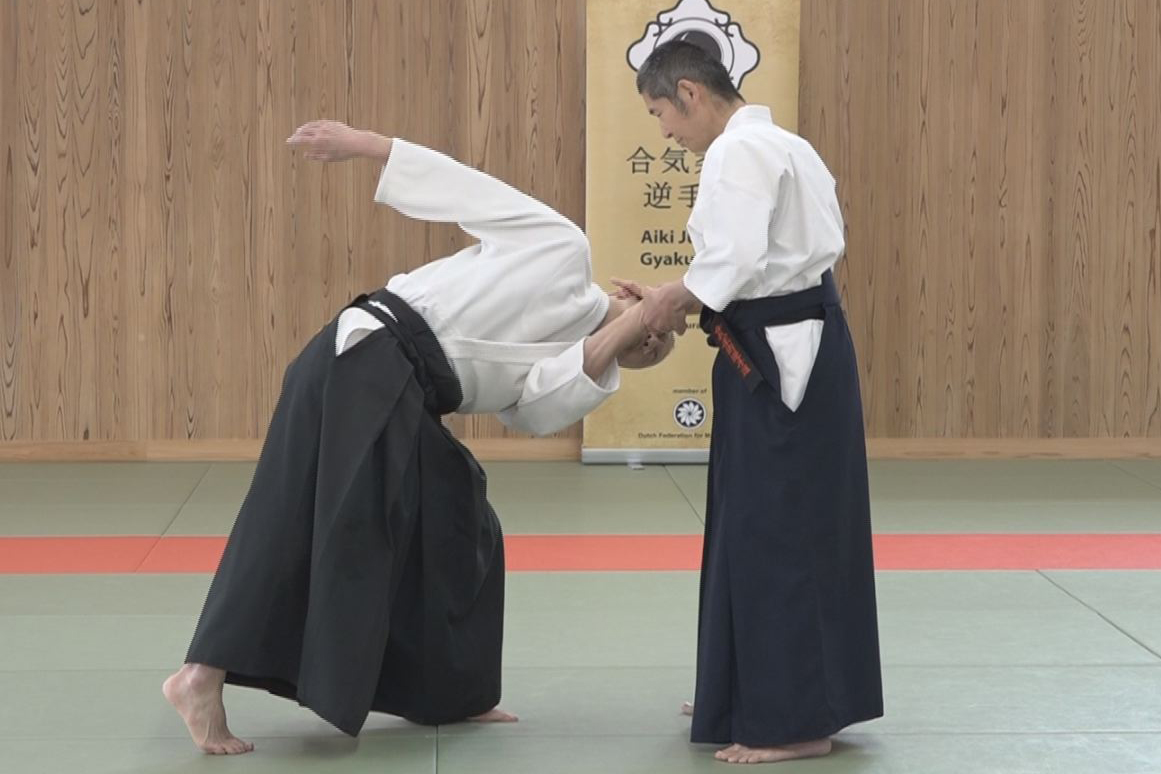
【AIKI Web Course Part 2】Lesson 17 Advanced tech. using AIKI Contact #1
-
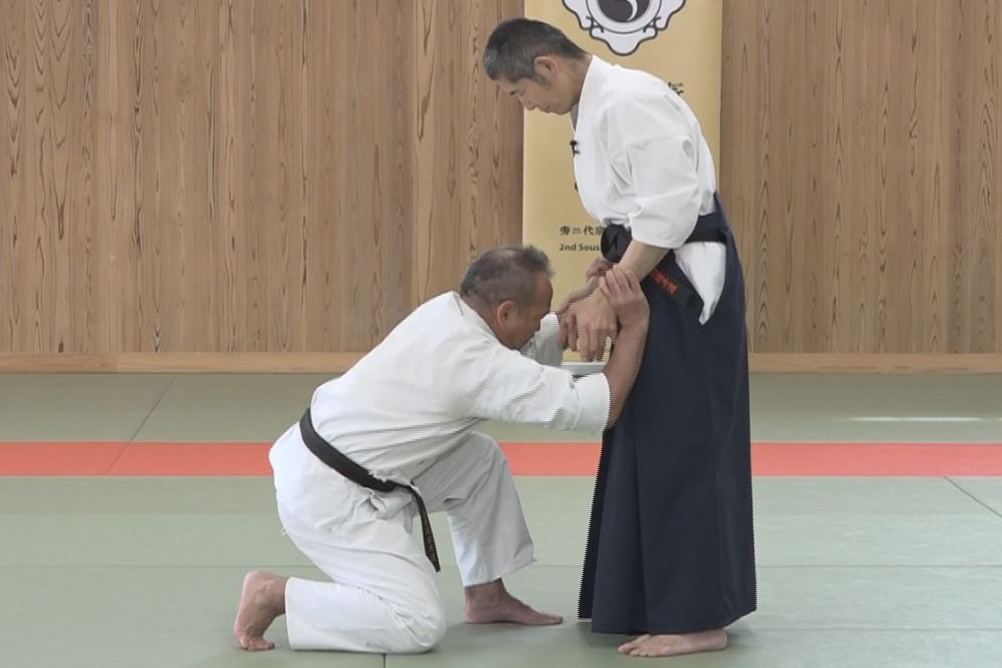
【AIKI Web Course Part 2】Lesson 16 Advanced tech. by Undetectable F.T. #2
-
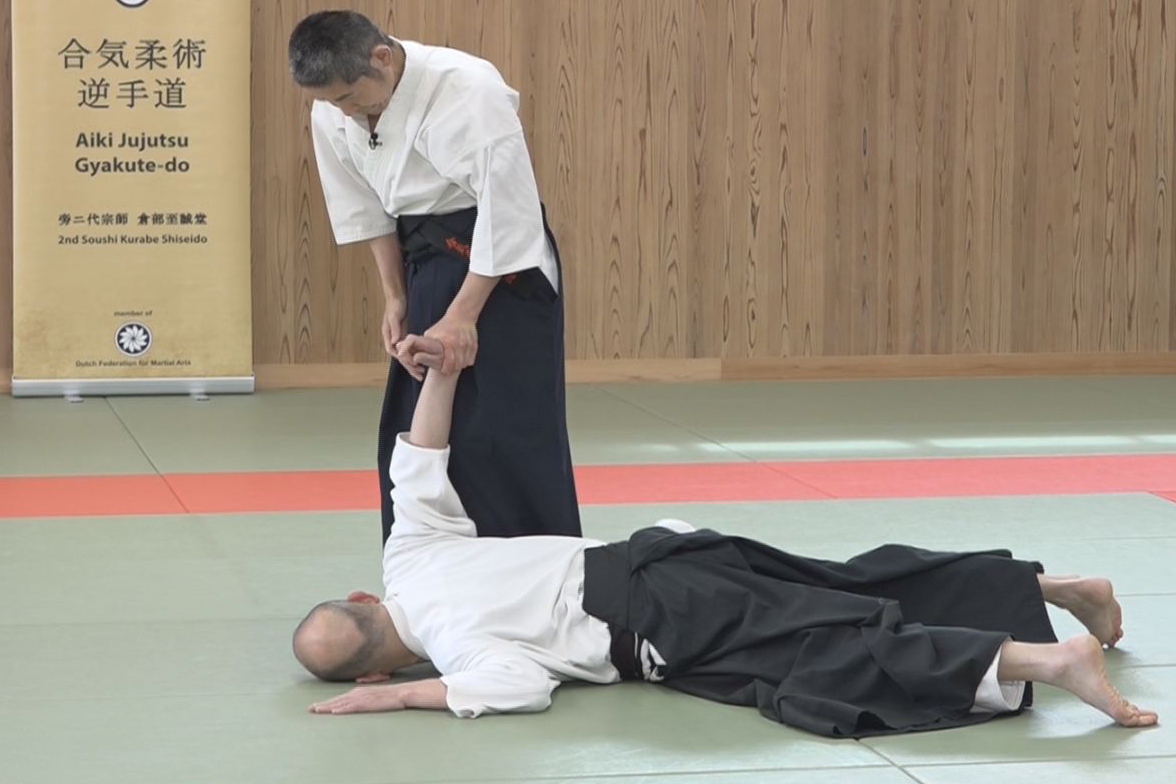
【AIKI Web Course Part 2】Lesson 15 – Advanced tech. by Undetectable F. T. #1
-

【AIKI Web Course Part 2】Lesson 14 – Advanced tech. by the Waving method #2
-
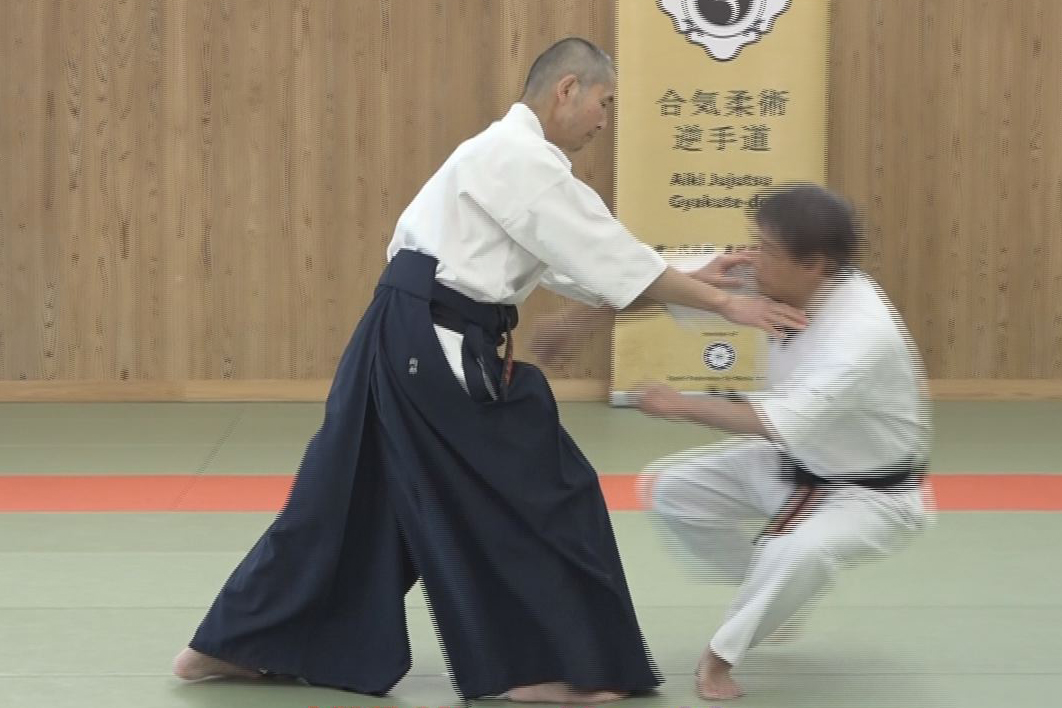
【AIKI Web Course Part 2】Lesson 13 – Advanced tech. by the Waving method #1
-
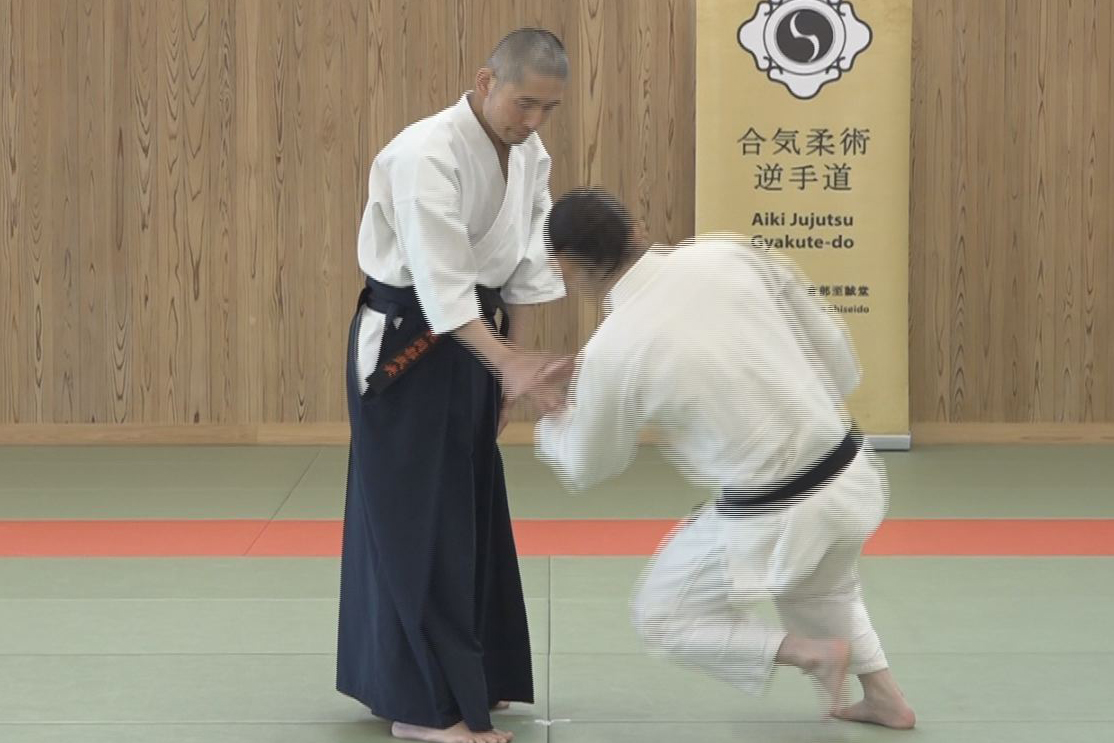
【AIKI Web Course Part 2】Lesson 12 – Gyaku-te by not Using Force nor AIKI
-
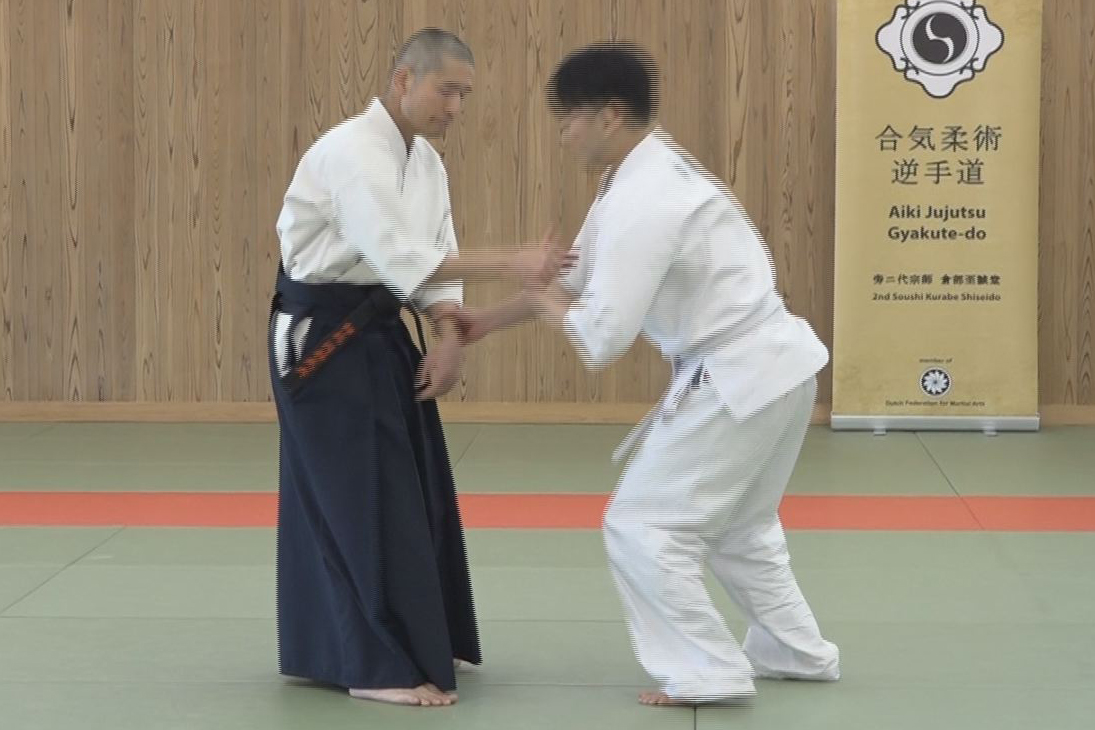
【AIKI Web Course Part 2】Lesson 11 – Gyaku-te Realized by the AIKI Method
-
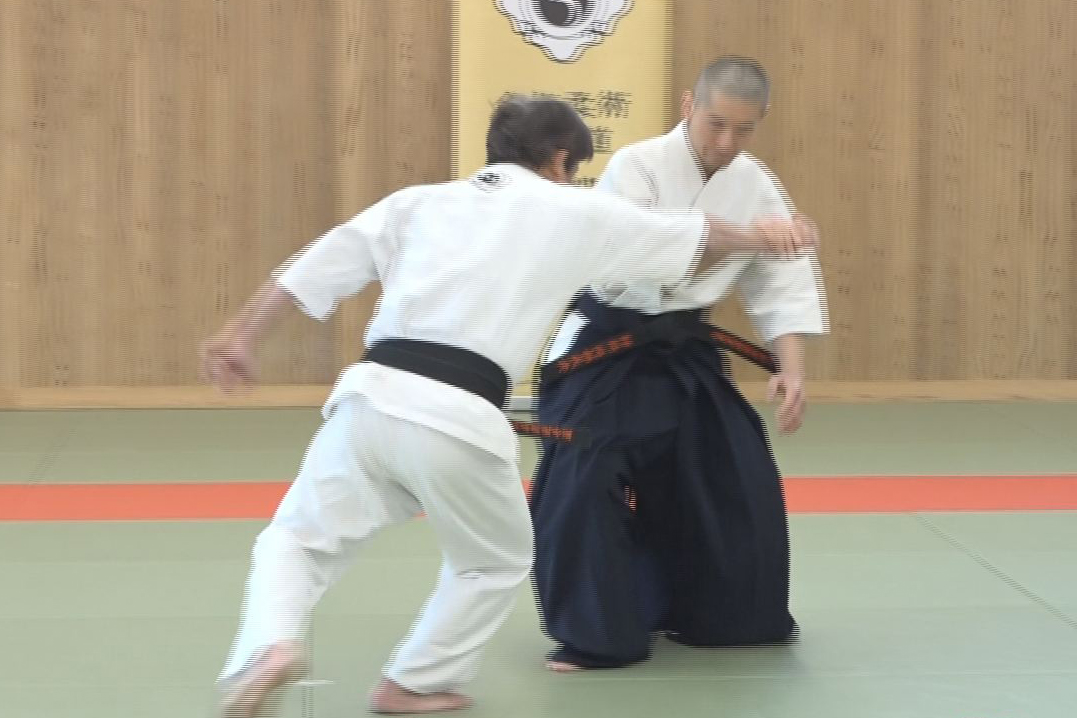
【AIKI Web Course Part 2】Lesson 10 – Application of Force Equilibrium method
-
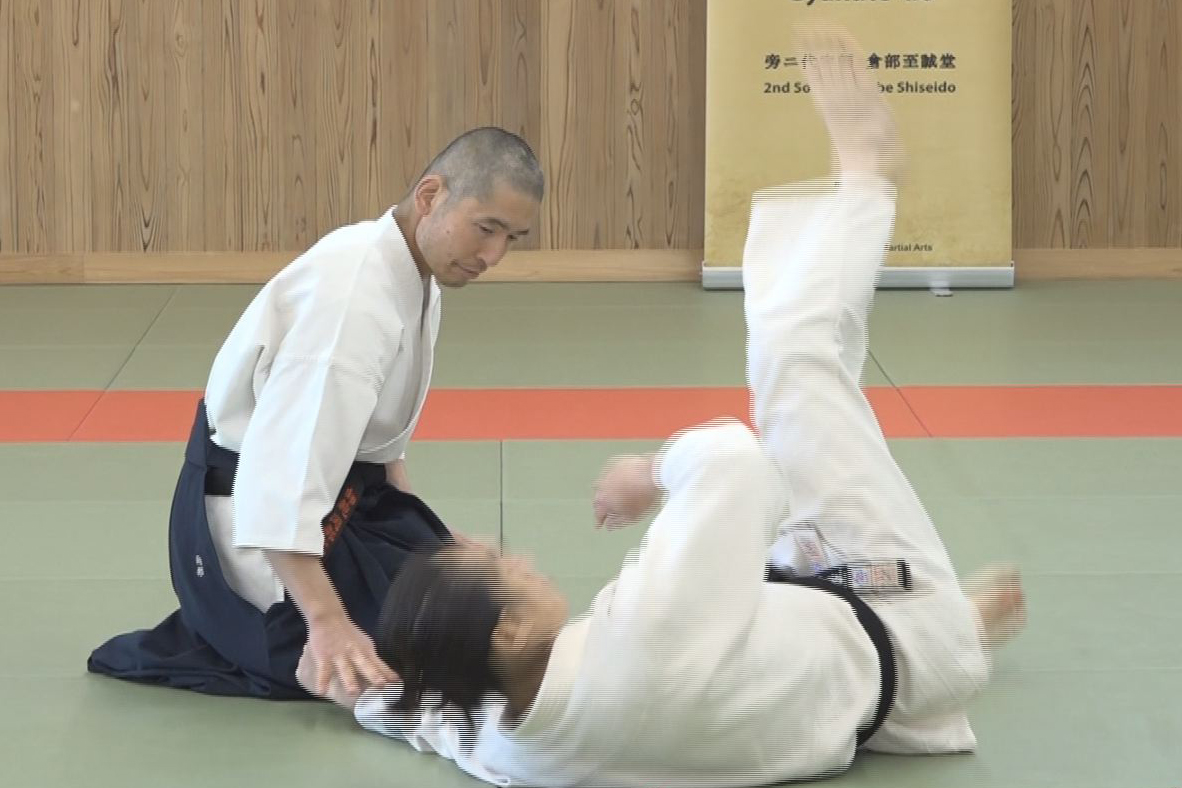
【AIKI Web Course Part 2】Lesson 9 – Force Equilibrium
-
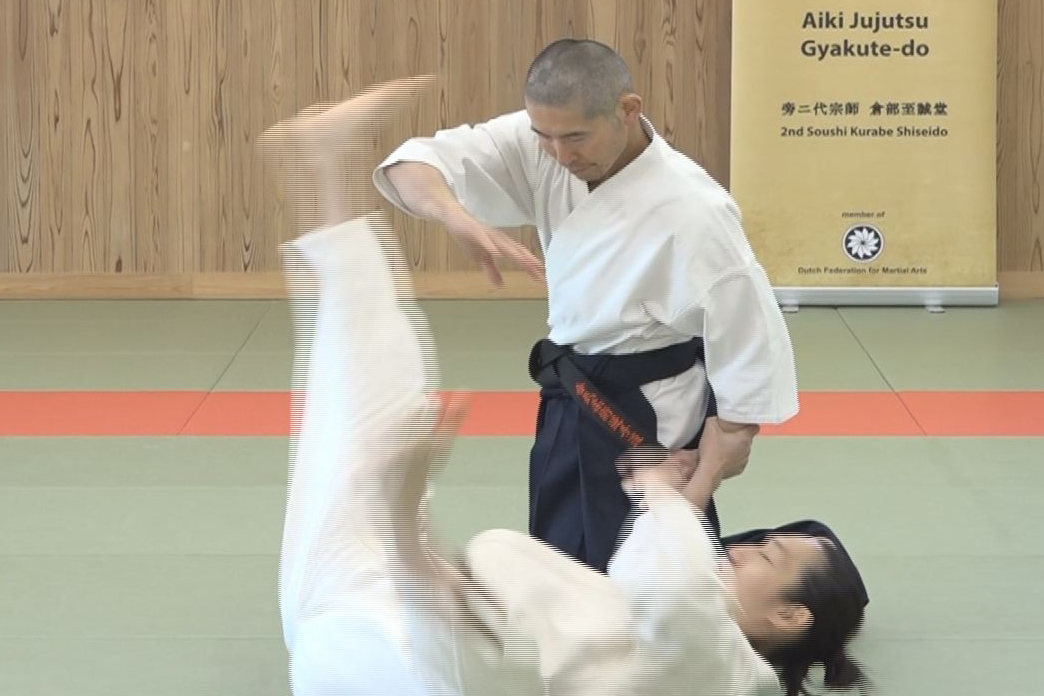
【AIKI Web Course Part 2】Lesson 8 – Application of Targeted Force Transfer
-
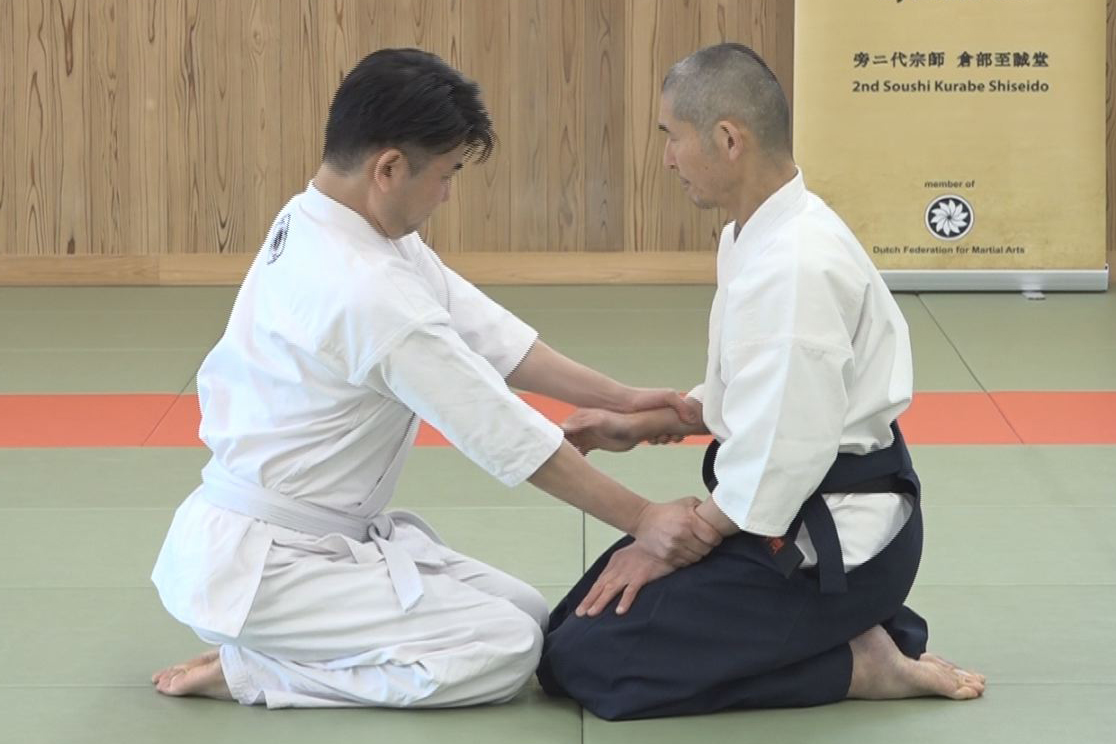
【AIKI Web Course Part 2】Lesson 7 – Targeted Force Transfer
-

【AIKI Web Course Part 2】Lesson 6 – Application of AIKI Connection
-
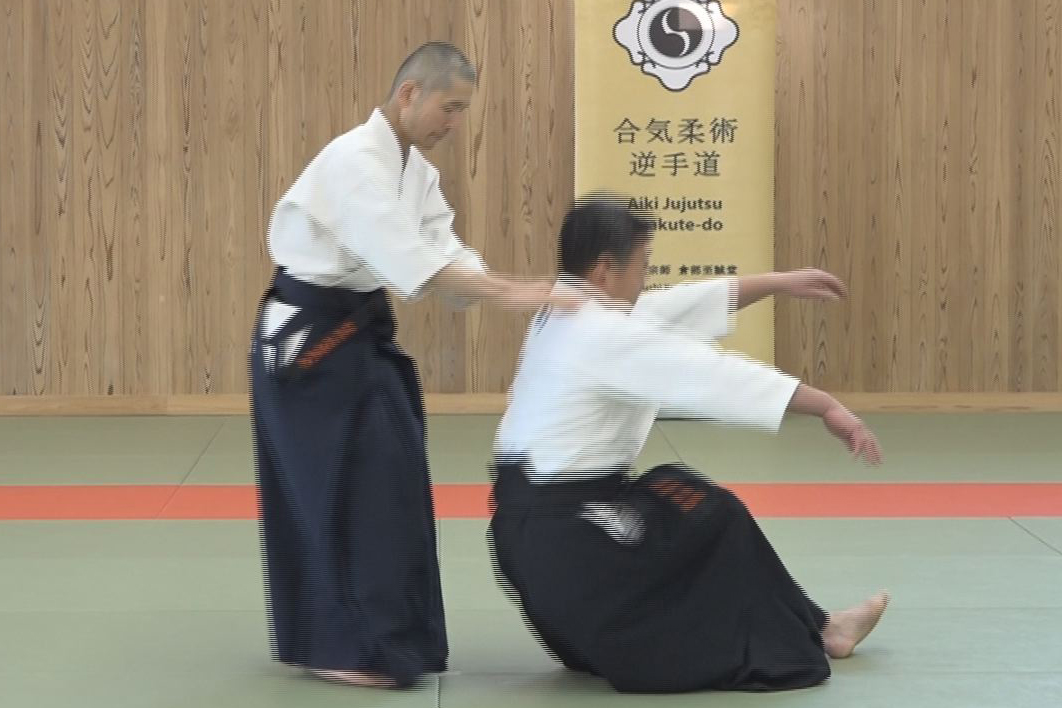
【AIKI Web Course Part 2】Lesson 5 – AIKI Connection
-

【AIKI Web Course Part 2】Lesson 4 – Application of Nondetectable Force Transfer
-
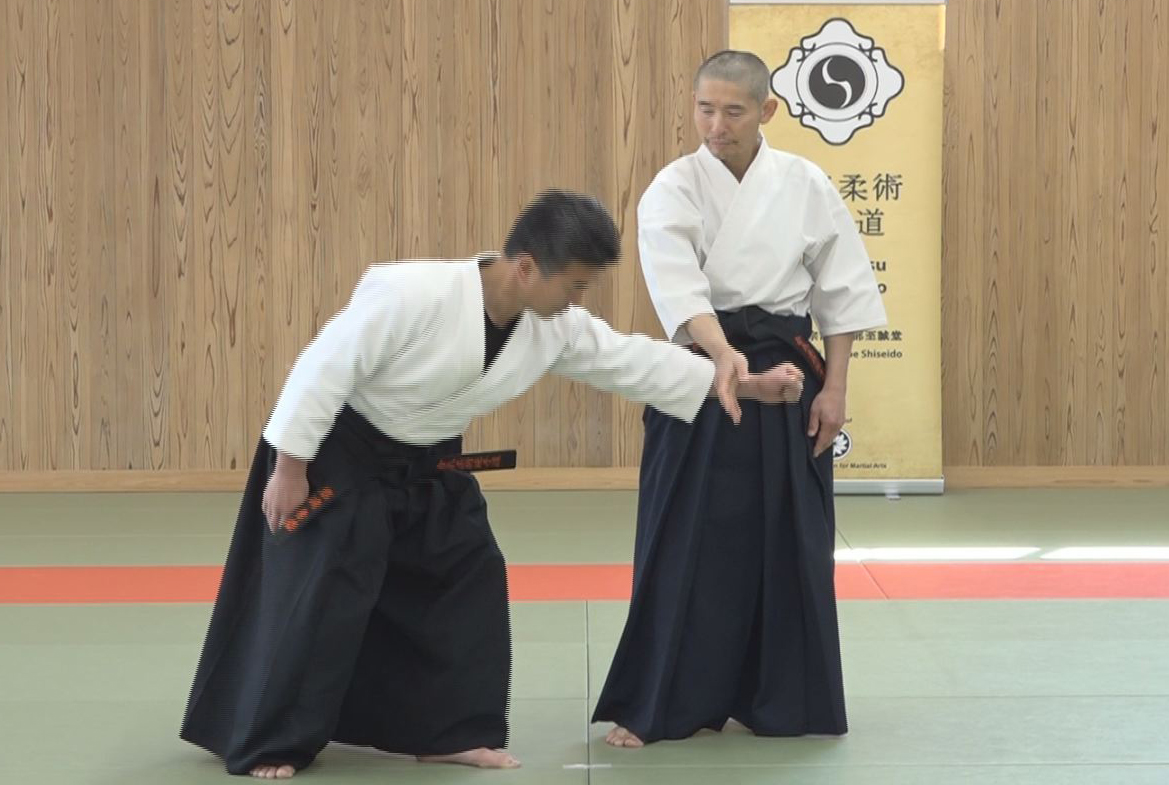
【AIKI Web Course Part 2】Lesson 3 – Explanation of Undetectable Force Transfer
-
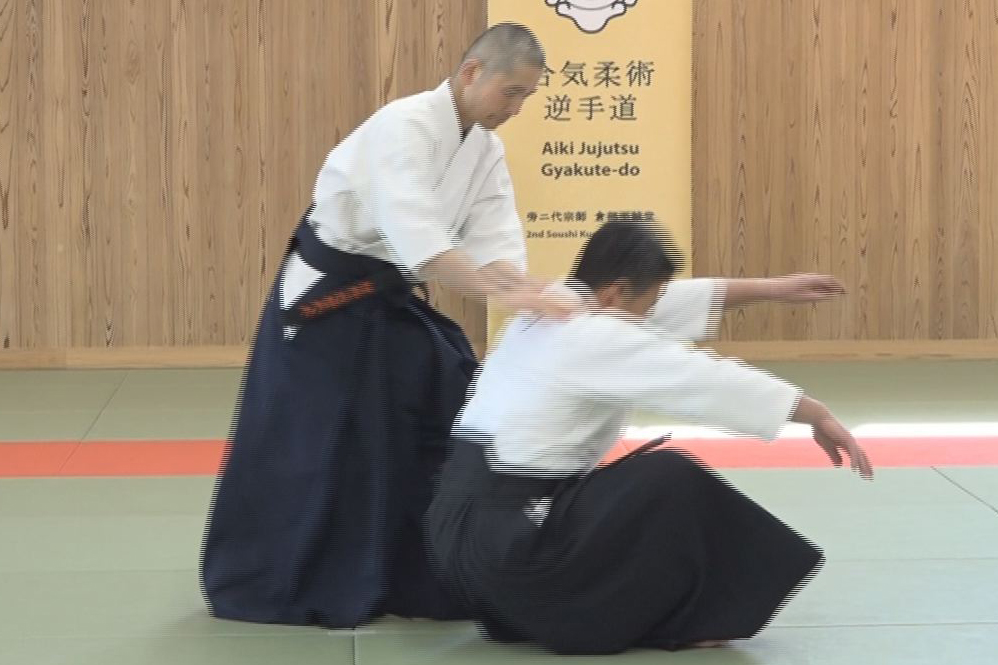
【AIKI Web Course Part 2】Lesson 2 – Application of Waving Method
-

【AIKI Web Course Part 2】Lesson 1 – The Explanation of Waving Method
-
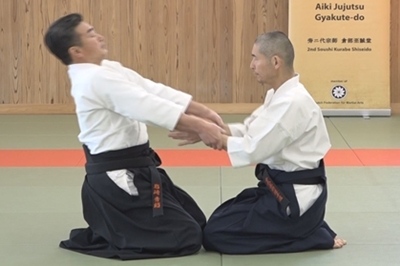
【AIKI Web Course Part 2】Introduction with video


